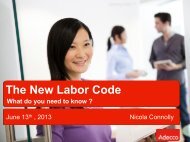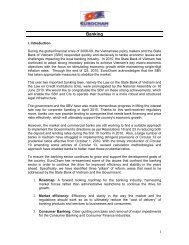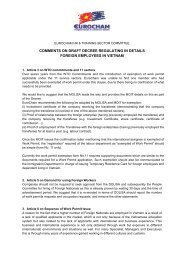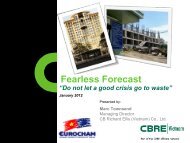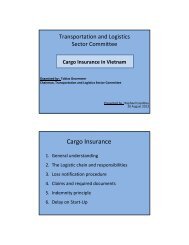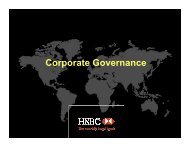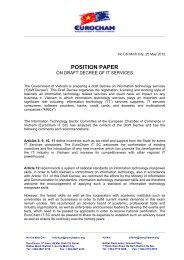ASEAN MUTUAL RECOGNITION ARRANGEMENT ON TOURISM ...
ASEAN MUTUAL RECOGNITION ARRANGEMENT ON TOURISM ...
ASEAN MUTUAL RECOGNITION ARRANGEMENT ON TOURISM ...
Create successful ePaper yourself
Turn your PDF publications into a flip-book with our unique Google optimized e-Paper software.
1. A student enters the Tour Operation field unsure of what their finalcareer might be.2. The student elects to enrol in a Certificate II in Tour Operation(Guiding), an entry/base-level qualification in the Secondary LabourDivision of Tour Operation.3. The student is required to take five Core and Generic competencies plussix additional functional competencies from Tour Operations or TourGuide Services.4. The student can select competencies to steer them in the direction oftheir anticipated career and/or to reflect the current needs of theirworkplace, but the final choice is theirs.Figure 3.2: Progression possibilities3.5.3 Building on Existing QualificationsEnrolling in a higher level qualification enables the student to use and build on theprevious units they have studied. Their unit selection will again reflect the blendof functional competencies they wish to attain and as previous units count towardstheir new qualification additional units are included to add the new competenciesdemanded by industry. The extent to which the student varies the functionalcompetency clusters from which they select will depend on their career goal andindustry need. This can also work over lifetimes by enabling employees to takeadditional modules and thus to ‘grow’ into new jobs.3.5.4 Practical and ProgressiveThis approach has produced qualifications that represent a blend of industryidentifiedcompetencies that enable practical workplace application as well asproviding the basis for promotion and continued learning, and the ability fortrainees to move between labour divisions as the need or opportunity arises.3.6 Industry-Based Content & Units of CompetencyThe qualifications listed in the proposed Framework are based on units ofcompetency developed by industry making the training content relevant andresponsive to industry need. As the qualifications rise through the levels(Certificate II to Advanced Diploma), so the choices of units of competency thatexist within the packaging rules vary to respond to the changing workplace natureof the tasks that need to be completed.P a g e | 25




